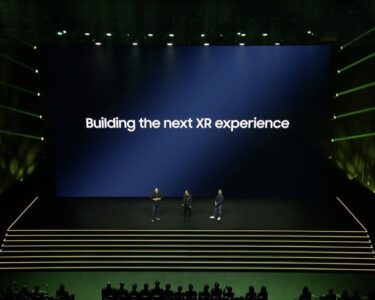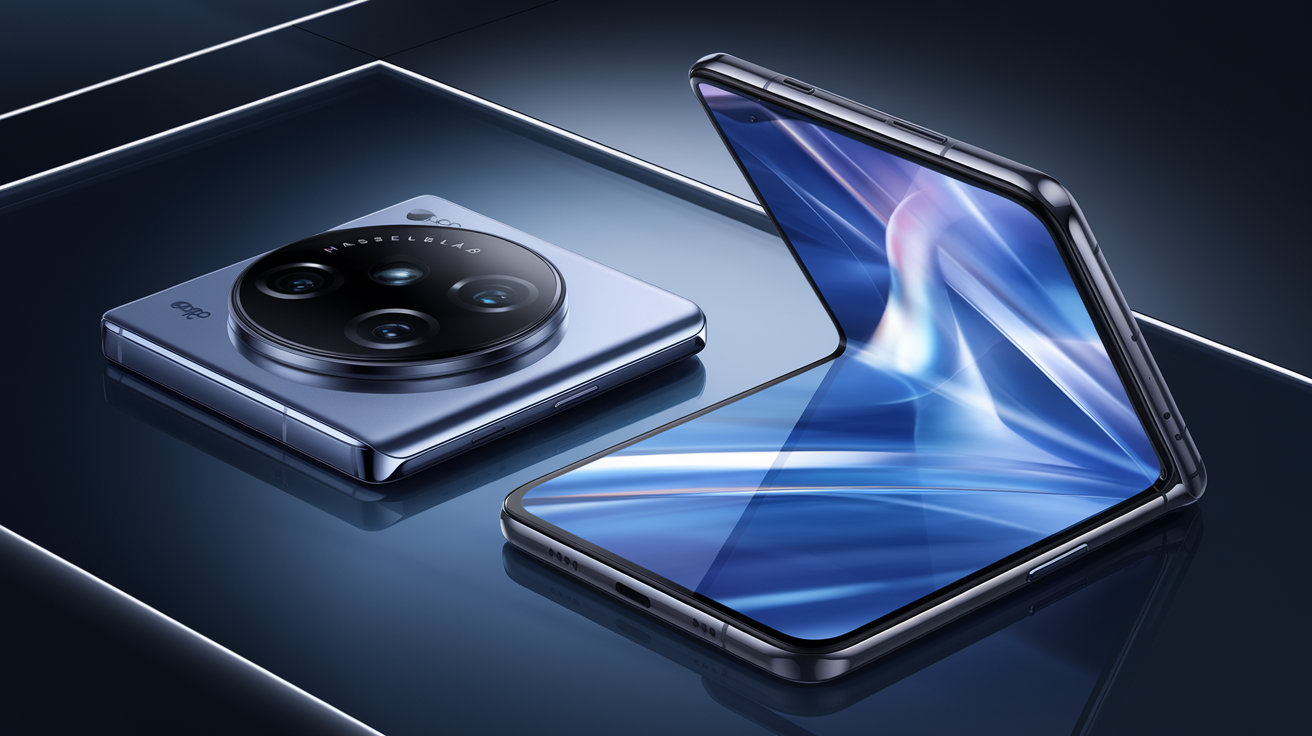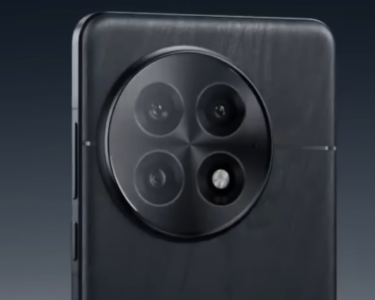The Google Pixel 9 Pro was launched in August 2024 and is now available. It has a sleek design with a 6.3-inch OLED screen that offers stunning visuals. The phone supports 5G and runs on Android 14, which is upgradable to Android 15. Powered by the Google Tensor G4 chip, it provides fast and smooth performance.
The phone comes with up to 1TB of storage and 16GB RAM. The triple camera system includes a 50MP main camera and can record videos in 8K. The battery is 4700 mAh, supporting fast charging, wireless charging, and reverse charging. It’s also water-resistant and comes in four colors.
The iPhone 16 Pro Max, released in September 2024, features a large 6.9-inch OLED display. It’s powered by the Apple A18 Pro chip and runs on iOS 18. The phone has up to 1TB storage and 8GB RAM. It supports 5G and has a triple camera system with a 48MP main camera and the ability to record high-quality 4K and even 3D videos. The battery has a capacity of 4685 mAh with fast wired and wireless charging options. It is also water-resistant and comes in sleek titanium finishes.
Google Pixel 9 Pro vs iPhone 16 Pro Max: A Simple Comparison
When looking at the Google Pixel 9 Pro and iPhone 16 Pro Max, it’s clear that both are high-end smartphones, each offering advanced features. But let’s break down how they compare in different areas so you can decide which one might suit your needs better.
Design and Build:
The Pixel 9 Pro has a sleek design with a glass front and back, protected by Gorilla Glass Victus 2, along with an aluminum frame. It’s fairly lightweight at 199 grams. The iPhone 16 Pro Max, on the other hand, feels more premium with its titanium frame. It is slightly heavier at 227 grams but offers extra durability with its Corning-made glass on the front and back. Both phones are IP68 water and dust-resistant, meaning they can handle being submerged in water for a short time.
Display:
The Pixel 9 Pro features a 6.3-inch LTPO OLED display. It’s bright and sharp with a 120Hz refresh rate for smooth scrolling, and it reaches up to 3000 nits at peak brightness, making it great for outdoor use. The iPhone 16 Pro Max, however, has a larger 6.9-inch Super Retina XDR OLED screen. It also has a 120Hz refresh rate and high brightness, up to 2000 nits, which is slightly lower than the Pixel. Both phones have excellent displays, but if you prefer a bigger screen, the iPhone 16 Pro Max wins here.
Performance:
Under the hood, the Google Pixel 9 Pro is powered by Google’s Tensor G4 chip. It’s an octa-core processor that handles everyday tasks and gaming with ease. On the other side, the iPhone 16 Pro Max is equipped with the Apple A18 Pro chip, which is faster and more powerful, especially when it comes to heavy tasks like gaming, photo editing, or multitasking. The iPhone’s performance is slightly better in benchmarks, but both phones are extremely capable of handling whatever you throw at them.
Camera:
The camera is a major highlight for both phones. The Pixel 9 Pro comes with a triple camera setup, including a 50MP main camera, a 48MP periscope telephoto lens for zooming, and another 48MP ultrawide lens.
It also offers cool features like Pixel Shift and Ultra-HDR, making your photos look great in different lighting conditions. The iPhone 16 Pro Max has a 48MP main camera too but adds a 12MP periscope telephoto lens with 5x optical zoom and a 48MP ultrawide lens.
Both phones can shoot video in 8K (Pixel) and high-quality 4K (iPhone). But the iPhone goes a step further with its ability to shoot 3D spatial video, which gives it an edge if you’re interested in creating 3D content.
Selfie Camera:
For selfies, the Pixel 9 Pro offers a 42MP ultrawide camera, which is perfect for fitting more people into your shots. The iPhone 16 Pro Max has a 12MP selfie camera, but with additional features like 3D spatial audio and HDR, making it a strong choice for video calls or recording high-quality front-facing videos.
Battery and Charging:
Battery life is another area where these phones perform well. The Pixel 9 Pro has a 4700 mAh battery, while the iPhone 16 Pro Max has a 4685 mAh battery. While the difference is small, the iPhone tends to last a bit longer on a single charge thanks to better optimization. Both phones support fast charging, with the Pixel charging up to 55% in 30 minutes and the iPhone getting 50% in the same time. They also support wireless charging and reverse wireless charging, so you can charge other devices with your phone.
Storage and RAM:
When it comes to storage, the Pixel 9 Pro gives you more options. It comes with 128GB, 256GB, 512GB, or even 1TB of storage, all paired with 16GB of RAM. The iPhone 16 Pro Max also offers similar storage options, starting at 256GB and going up to 1TB, but with 8GB of RAM, which is slightly less than the Pixel. However, iPhones generally don’t need as much RAM as Android phones due to the way iOS is optimized, so both phones should perform well in day-to-day use.
Operating System:
The Google Pixel 9 Pro runs on Android 14, and it will receive updates for several years, up to Android 15 and beyond. Android is known for its flexibility and customization options. The iPhone 16 Pro Max runs on iOS 18, which is smooth, secure, and known for its simplicity. If you’re already in the Apple ecosystem, the iPhone might be a better choice. But if you prefer the freedom to customize your phone, the Pixel 9 Pro with Android could be more appealing.
Other Features:
Both phones come with cutting-edge technology. The Pixel 9 Pro has unique features like “Circle to Search” and “Satellite SOS,” making it useful in emergency situations. The iPhone 16 Pro Max offers satellite communication as well, along with Apple’s signature Face ID for unlocking. The Pixel relies on an under-display fingerprint sensor instead.
Price:
In terms of price, the Pixel 9 Pro starts at $999, while the iPhone 16 Pro Max is priced slightly higher at $1,199. So, if you’re looking for a more budget-friendly option, the Pixel might be the better pick.
Conclusion:
In the end, both the Google Pixel 9 Pro and the iPhone 16 Pro Max are excellent smartphones. The Pixel stands out with its more affordable price, great display, and powerful cameras. The iPhone, on the other hand, excels in performance, battery life, and ecosystem integration. Your choice will likely come down to whether you prefer Android or iOS, as well as the features that matter most to you—camera quality, screen size, or budget.
What is my opinion about the Google Pixel 9 Pro and iPhone 16 Pro Max
In my opinion, both the Google Pixel 9 Pro and iPhone 16 Pro Max are great phones, but they each have their own strengths depending on what you’re looking for.
First, when it comes to the design, I think the iPhone 16 Pro Max feels more premium. The titanium frame gives it a more durable and high-end feel, even though it’s a bit heavier. The Pixel 9 Pro is lighter, and the glass back looks sleek, but it doesn’t feel as tough as the iPhone. For everyday use, both would hold up well, but I personally like the sturdiness of the iPhone.
The display is a key factor for me. The iPhone 16 Pro Max has a bigger screen at 6.9 inches, which makes watching videos or browsing feel more immersive. But the Pixel 9 Pro’s display is also impressive, especially with its brightness that peaks at 3000 nits. I don’t often use my phone outside in bright sunlight, so the iPhone’s screen size matters more to me than the extreme brightness of the Pixel.
When it comes to performance, the iPhone 16 Pro Max is faster, thanks to its A18 Pro chip. It handles tasks very smoothly, whether I’m multitasking or gaming. However, the Google Pixel 9 Pro’s Tensor G4 chip is still powerful and gets the job done. It’s more than enough for everyday tasks and apps, but if I was into heavy gaming or editing videos, I would lean towards the iPhone for that extra performance boost.
For the camera, I’m really impressed by both phones. The Pixel 9 Pro has a 50MP main camera and offers a ton of features like Pixel Shift and Ultra-HDR, which make photos look fantastic. I love how sharp the images are, and the telephoto lens with 5x zoom is very useful for close-up shots. The iPhone 16 Pro Max also takes amazing photos, especially with its ability to shoot 3D spatial video. That’s a cool feature if you’re into making creative content. But for me, the Pixel’s camera seems more versatile for regular photo-taking.
Battery life is super important for me, and both phones perform well here. The iPhone 16 Pro Max tends to last a bit longer, but the Pixel 9 Pro’s fast charging is a bonus, especially when I need a quick power boost. Both phones offer wireless charging and reverse wireless charging, which is handy for charging my other gadgets.
Storage options are similar for both phones, but the Pixel 9 Pro gives you 16GB of RAM, while the iPhone sticks with 8GB. Although iPhones don’t need as much RAM to run smoothly, I feel like the Pixel offers better value here, especially if you’re multitasking with lots of apps.
I also like the flexibility of Android on the Pixel. I enjoy customizing my phone, changing widgets, and making it look the way I want. On the other hand, iOS is smooth and secure, and if I was more invested in the Apple ecosystem, it would be a no-brainer to pick the iPhone. But as someone who prefers a little more control over my phone’s interface, I’d lean towards the Pixel.
The price is another factor. The iPhone 16 Pro Max is more expensive, and while it offers a lot of premium features, I feel like the Pixel 9 Pro gives more bang for your buck. It’s slightly more affordable, and still offers top-notch performance, cameras, and features.
In conclusion, if I wanted a phone with a more premium feel, slightly better performance, and was already into the Apple ecosystem, I would go with the iPhone 16 Pro Max. But for the price and flexibility, I’d personally prefer the Google Pixel 9 Pro (available in online store). It’s a well-rounded phone that meets all my needs.
Comparison table for the Google Pixel 9 Pro and iPhone 16 Pro Max:
| Feature | Google Pixel 9 Pro | iPhone 16 Pro Max |
|---|---|---|
| Launch Date | September 9, 2024 | September 20, 2024 |
| Price | $999 | $1,199 |
| Dimensions | 152.8 x 72 x 8.5 mm | 163 x 77.6 x 8.3 mm |
| Weight | 199g | 227g |
| Build | Glass front/back (Gorilla Glass Victus 2), aluminum | Glass front/back (Corning), titanium frame |
| Display Size | 6.3 inches | 6.9 inches |
| Display Type | LTPO OLED, 120Hz | Super Retina XDR OLED, 120Hz |
| Resolution | 1280 x 2856 pixels (495 ppi) | 1320 x 2868 pixels (460 ppi) |
| Brightness | 3000 nits (peak) | 2000 nits (peak) |
| Operating System | Android 14 (upgradable to Android 15) | iOS 18 |
| Processor | Google Tensor G4 (4 nm) | Apple A18 Pro (3 nm) |
| RAM | 16GB | 8GB |
| Storage Options | 128GB, 256GB, 512GB, 1TB | 256GB, 512GB, 1TB |
| Main Camera | Triple: 50MP (wide), 48MP (telephoto), 48MP (ultrawide) | Triple: 48MP (wide), 12MP (telephoto), 48MP (ultrawide) |
| Zoom | 5x optical zoom | 5x optical zoom |
| Selfie Camera | 42MP (ultrawide) | 12MP (wide), with 3D spatial video/audio |
| Video Recording | 8K@30fps, 4K@60fps, 1080p@240fps | 4K@120fps, 1080p@240fps, 3D (spatial) video |
| Battery Capacity | 4700 mAh | 4685 mAh |
| Charging | 27W wired, 21W wireless, reverse wireless | 50% in 30 minutes (wired), 25W wireless (MagSafe) |
| Water/Dust Resistance | IP68 (1.5m for 30 min) | IP68 (6m for 30 min) |
| Additional Features | Circle to Search, Satellite SOS | Face ID, 3D spatial video/audio, Satellite SOS |
| Colors Available | Porcelain, Rose Quartz, Hazel, Obsidian | Black, White, Natural, Desert Titanium |
This table summarizes the key differences and similarities between the two phones in an easy-to-read format.
What generally ask by the smartphone users when comparing the Google Pixel 9 Pro and iPhone 16 Pro Max:
1. Which phone has a better camera?
- Both phones have impressive cameras. The Google Pixel 9 Pro has a 50MP main camera and a 42MP selfie camera, making it great for detailed photography. The iPhone 16 Pro Max has a 48MP main camera and offers unique features like 3D spatial video and audio, which is perfect for those into creative content. It really depends on your use—both are top-tier in their own way.
2. Which phone is better for gaming?
- The iPhone 16 Pro Max is better suited for gaming due to its A18 Pro chip and hexa-core processor, which handle games smoothly, especially high-performance ones. The Google Pixel 9 Pro is also strong with its Tensor G4 chip, but the iPhone provides a faster, more powerful experience for hardcore gaming.
3. Which phone has a better display?
- The iPhone 16 Pro Max has a larger 6.9-inch display compared to the Pixel’s 6.3-inch screen. The Pixel 9 Pro display is brighter with a peak brightness of 3000 nits, while the iPhone tops at 2000 nits. Both have OLED screens with 120Hz refresh rates, but if you prefer a bigger display, the iPhone might be better.
4. Which phone has better battery life?
- Both phones offer solid battery life. The iPhone 16 Pro Max generally lasts a bit longer, with an active use score of around 17 hours, compared to the Pixel 9 Pro, which lasts about 13 hours. Both support fast charging and wireless charging.
5. Which phone is more durable?
- The iPhone 16 Pro Max is slightly more durable with its titanium frame and Ceramic Shield glass. It’s also water-resistant up to 6 meters for 30 minutes, compared to the Pixel 9 Pro, which is water-resistant up to 1.5 meters for 30 minutes.
6. Which phone is better for daily use?
- For daily tasks, both phones perform well. The Pixel 9 Pro offers more RAM (16GB) and allows for greater multitasking, while the iPhone 16 Pro Max is faster and more efficient with 8GB of RAM. If you prefer more flexibility in customizing your phone, the Pixel 9 Pro might be a better fit due to Android’s versatility.
7. Which phone offers better value for money?
- The Google Pixel 9 Pro is more affordable, priced at around $999, while the iPhone 16 Pro Max starts at $1,199. If you’re looking for top features without spending extra, the Pixel 9 Pro offers great value.
8. Does the iPhone 16 Pro Max have any unique features?
- Yes, the iPhone 16 Pro Max has features like 3D spatial video/audio recording, Face ID, and the Ultra Wideband (UWB) Gen2 chip for better location services. These features are especially useful for people in the Apple ecosystem or those who enjoy using creative, cutting-edge technology.
9. Does the Google Pixel 9 Pro support 3D video recording?
- No, the Google Pixel 9 Pro doesn’t support 3D video recording, but it has a range of powerful camera features like Pixel Shift, Zoom Enhance, and Ultra-HDR, making it excellent for high-quality photography and regular video shooting.
10. Which phone should I buy if I want fast software updates?
- The Google Pixel 9 Pro will receive up to 7 major Android upgrades, making it ideal for staying up-to-date with the latest Android features. However, iPhones are known for long-term support, and the iPhone 16 Pro Max will receive iOS updates for many years too.




